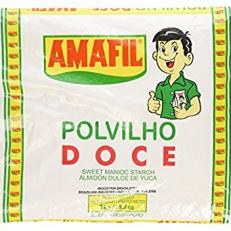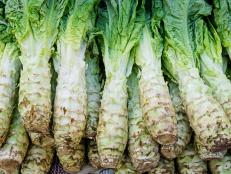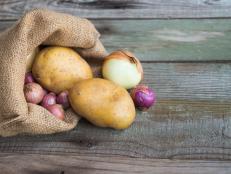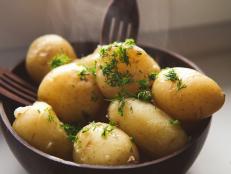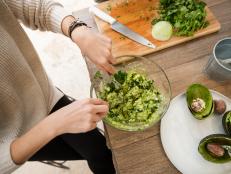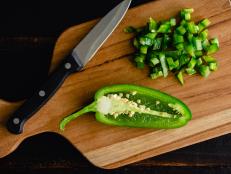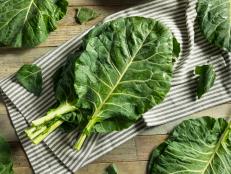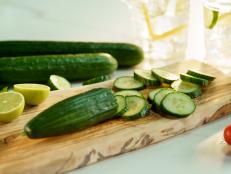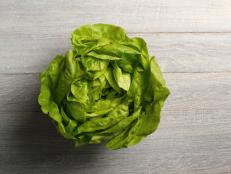What Is Tapioca?
This versatile starch comes from a tropical root vegetable and is a key ingredient in tapioca pudding and much more.
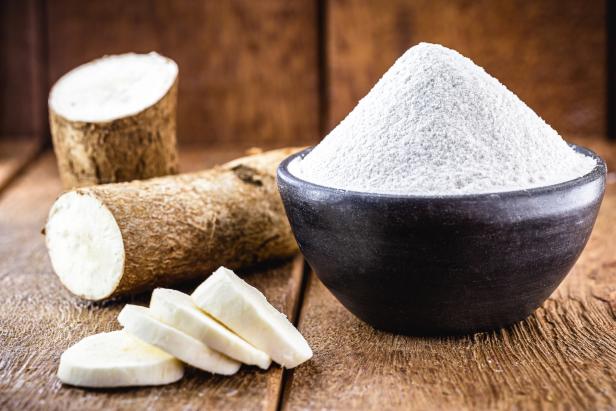
RHJ / Getty Images
By Carlos C Olaechea and Fraya Berg for Food Network Kitchen
Carlos is a contributing writer at Food Network.
Fraya is a chef and a contributing writer at Food Network.
For many people in the U.S., mention the word “tapioca” and perhaps the only association that comes to mind is tapioca pudding. Not many people outside the tropics may fully understand what tapioca actually is or where it comes from. However, tapioca is a staple for many people throughout the world and has virtually changed the diets of countless populations. Tapioca is the key ingredient in tapioca pudding, but using those little granules in a custardy dessert is just the very top of an immense culinary iceberg. Learn more about tapioca, where it comes from and how it can revolutionize your cooking.

KalypsoWorldPhotography / Getty Images
What Is Tapioca Starch?
Tapioca starch is the starch extracted from tapioca root. Tapioca starch is similar in appearance to that of corn, potato and other similar starches - bright white and almost ethereally fine. A light puff of air will send bursts of powdery clouds into the air.
Tapioca starch is an amazing thickening agent that gives soups, stews and sauces a silky texture. It’s also a lot more stable than the more common cornstarch, which breakds down after several hours, making your sauce runny. That doesn’t happen with tapioca starch! You can come back to a dish several days later and still be rewarded with a thick, velvety mouthfeel.
Besides being a more stable thickener, tapioca starch also adds a particular texture to sauces and custards, giving them an almost slippery consistency.
In greater proportions, tapioca starch can make foods bouncy, springy, chewy or stretchy. It is an important ingredient in many gluten-free baking mixes as it replicates the chewy texture of gluten (tapioca is naturally gluten-free). In many Asian cuisines, tapioca starch is used to make satisfyingly chewy desserts. It’s also the secret ingredient in the bubble pearls or boba you find in Taiwanese-style milk teas.
Tapioca starch has a different effect when used as a coating for fried foods. Instead of becoming slippery, it creates an exquisitely crunchy crust that will stay crunchy for a long time. Imagine the same beautiful crunch you hear when eating a potato chip but while biting into a chicken tender. That’s the magic of tapioca starch.
How to Buy Tapioca Starch
You can sometimes find it in grocery stores by the cornstarch in the baking aisle. You can also find tapioca starch in many Asian grocery stores.
Latin American grocery stores also carry tapioca starch, but it may be labeled differently. Look for packages of snowy-white powder labeled yucca starch or cassava starch. Tapioca starch is very popular in Brazilian cooking, and you are guaranteed to find it at Brazilian markets usually as amido de mandioca, fécula de mandioca or polvilho. However, do pay attention to the type you buy. Make sure the label says "doce" (sweet) and not "azedo" (sour). The sour type is fermented and slightly acidic.
Tapioca Starch vs. Tapioca Flour
Tapioca starch is sometimes referred to as tapioca flour, but that’s a misnomer, as flour implies that the whole root or grain is milled. A starch, on the other hand, is extracted from the root or grain. In short, products labeled as tapioca flour and tapioca starch are the same thing.
What Is Minute Tapioca?
Also known as instant tapioca or quick tapioca, these small par-cooked granuales dissolve quickly when added to pie fillings, cobblers or soups and stews - recipes that commonly call for it.

bhofack2/Getty Images
What Are Tapioca Pearls? What Are Tapioca Balls?
Tapioca is also sold in small dried pearls which are commonly used in tapioca pudding and larger balls which are boiled, soaked in sugar syrup and served in tall glasses of icy milk tea known as boba or bubble tea. For a full how-to on cooking tapioca pearls, head over to our story How to Cook Tapioca Pearls.
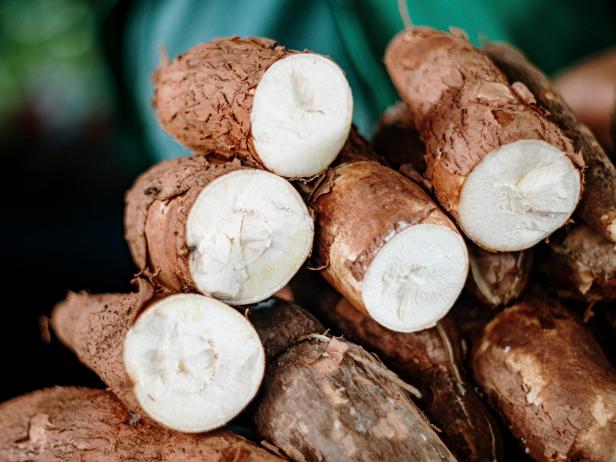
gustavo ramirez/Getty Images
What Is Tapioca Made Of?
Tapioca is a long, thick root with a brown, papery, bark-like skin. Certain specimens can be several feet long! Like many root vegetables, tapioca is starchy. In fact, it’s very starchy - starchier than potatoes, even. As such, it’s an ideal vegetable from which to obtain pure starch. Starch has been artisanally extracted from tapioca roots for thousands of years, usually by finely grating the root, thoroughly washing it with clean water to remove the toxins (more on that below) and extracting the white starch.
Tapioca root originated in the Americas and was a staple of the original inhabitants of the Caribbean islands, the Taino and Arawak peoples. As well, it continues to be a staple among many indigenous Amazonian tribes, who have used this root to make everything from flatbreads and gruels to alcoholic beverages. When Spanish and Portuguese colonizers invaded the Americas, they took these roots on their land-grabbing expeditions throughout the world. As a result, tapioca roots became firmly embedded in the cuisines of West Africa, Southeast Asia and the Indian subcontinent.
The root goes by many names, including manioc, cassava and yucca. You may have heard these terms if you’ve ever been to a Latin American restaurant or eaten Southeast Asian sweets.
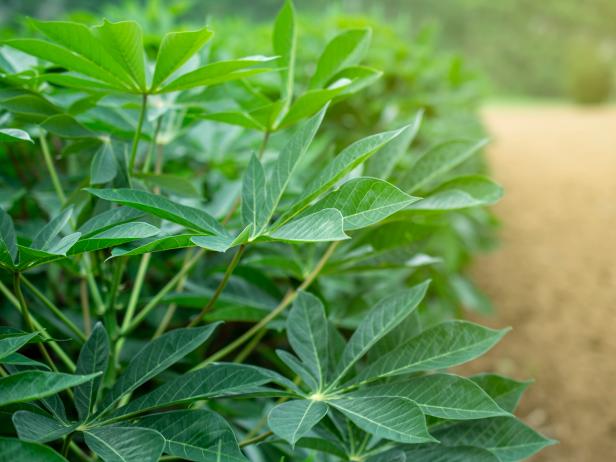
Nitat Termmee/Getty Images
Is Tapioca Poisonous?
Tapioca is poisonous when raw, but perfectly safe to eat and very nutritious when fully cooked or processed. Most tapioca starch currently on the market is safely made in factories and presents no risk of poisoning.
While you may be tempted to DIY your own tapioca starch from fresh tapioca roots, we highly advise against it. Remember that native peoples have millennia of passed-down knowledge on how to safely process tapioca, and the risk of cyanide poisoning from incorrect handling is very real.
Is Tapioca Gluten-Free?
Tapioca is indeed gluten-free, making it a popular stand-in for wheat flour in many recipes.
Is There a Substitute for Tapioca Starch?
The easiest substitute for tapioca starch is cornstarch, which is a cup-for-cup replacement for tapioca starch.
Storing Tapioca
Tapioca starch should be stored like any other starch or flour. Keep it in an airtight container and make sure it’s kept away from moisture or humidity, as this will make the tapioca starch clump. Store instant tapioca and tapioca pearls in artight containers away from light.
Tapioca Recipes
You can use tapioca in very much the same ways you use other types of starches. It is an excellent substitute for cornstarch if you are cutting out corn or other grains from your diet. It is an ideal pantry staple for people who observe Passover, for instance.
In Sauces
You can use it to thicken a creamy sauce or pan gravy. If you find that your soup is just a little too watery, tapioca starch will give it a sensuously thick consistency. Like all starches (including cornstarch), you cannot add it directly to hot liquids or it will immediately form clumps. Instead, mix the tapioca starch with a little bit of cool water in a small bowl to form a slurry, which you then stir into your sauce, gravy, soup or custard. One to two teaspoons for a quart of liquid is typically enough to coat the back of a spoon. Start with just a little bit and then add a little bit more if you think it needs it.
In Puddings
Tapioca pudding is one of the most common uses for tapioca pearls. The sweet, warm, creamy pudding is commonly made from tapioca pearls, milk (or cream or coconut milk) and eggs.
When Frying
When frying foods, you can dredge your meats or vegetables in a light coating of tapioca flour to give them a crisp exterior. You can also make a tapioca starch paste to make a super crunchy coating. This is a technique commonly used in Chinese cuisines and the secret to super crunchy Chinese-American favorites, like General Tso’s Chicken. You can also add tapioca starch to breading or flour mixtures to improve the crunchiness, and tapioca starch is an excellent addition to batters. Next time you make fish and chips or onion rings, try substituting some of the wheat flour with tapioca starch. You will end up with the crunchiest crusts you’ve ever made!
Eastside Fish Fry's Famous Deep-Fried Chicken Wings
The secret to these crunchy wings is just a bit of tapioca starch in the breading. That and an assertive amount of seasoning. If you're wondering if you should add just a touch more spice, the answer is yes with these.
For Baking
For baking, it’s best to follow recipe instructions. You would typically whisk the tapioca starch with other ingredients (including other gluten-free flours) before adding liquids. However, quantities can vary from recipe to recipe. Tapioca starch is used on its own or in combination with other starches or flours in many Asian and Latin American recipes. The techniques can be different from typical European or North American baking styles, though. Brazilian cheesy breads called pao de queijo, for instance, are made by cooking tapioca flour with butter and milk to form a paste before baking.
Instant tapioca is often tossed together with the fruit in pies and cobblers.
Pao de Queijo
These Brazilian cheesy breads are made similarly to choux pastries but with tapioca starch instead of wheat flour. The unbaked dough balls freeze well and make for a quick last-minute snack or appetizer.
In Bubble Tea
Bubble tea, also referred to as boba, is made with cooked and sweetened tapioca pearls or balls.
Related Content:
























